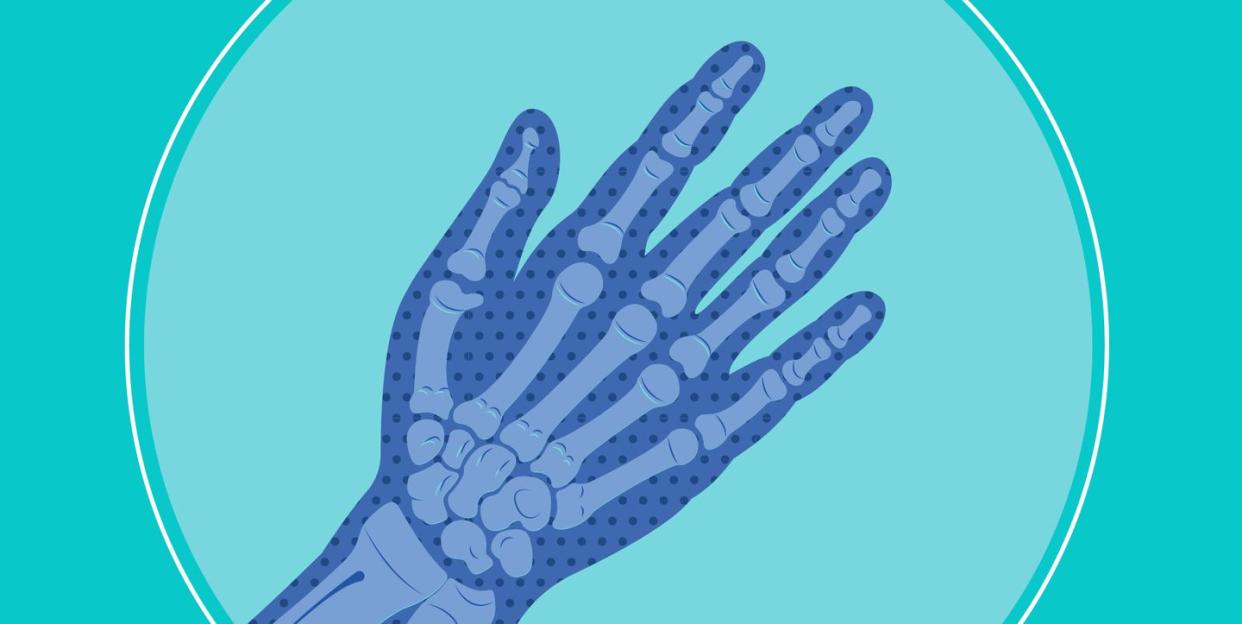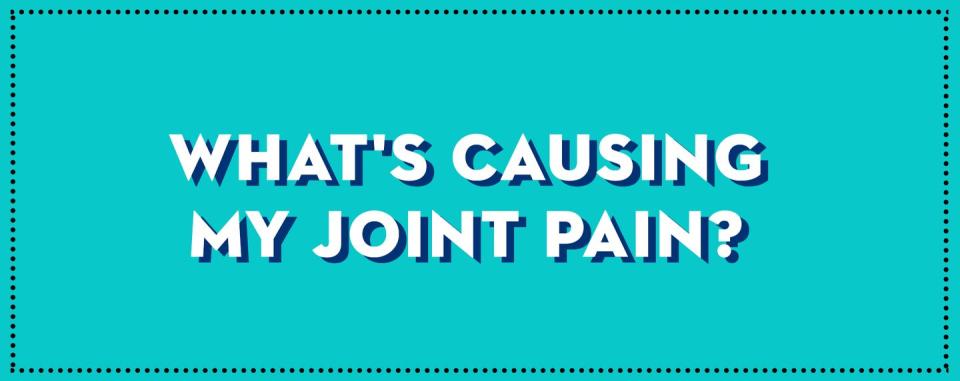The Reasons You May Be Having Joint Pain and Ways to Ease It

Joints are the body’s hardworking hinges. When healthy, they connect your bones and give you the range of motion you need to carry out daily activities. Women, though, are particularly vulnerable to joint pain, stiffness and frustration. In fact, the Centers for Disease Control and Prevention predicts that by 2040, two-thirds of arthritis (joint inflammation) sufferers will be female.
Experts point to a number of explanations for the disparity between men and women in arthritis. For starters, obesity is a major risk factor for osteoarthritis, and weight gain triggered by menopause can place stress on joints. Plus, hormones make womens' ligaments more lax, so they offer less support for joints at certain points in the menstrual cycle. Some research suggests that the angle of women’s hips to their knees could make women more prone to anterior cruciate ligament (ACL) injuries—another factor in osteoarthritis.
“Women’s immune systems seem to be more robust than men’s,” says Iris Navarro-Millan, M.D., an assistant professor of medicine at Weill Cornell Medicine and Hospital for Special Surgery. But this disease-fighting superpower could put immune systems into overdrive, leading them to misguidedly attack joints. As a result, women are also much more likely to have autoimmune-related joint conditions such as rheumatoid arthritis and lupus.
Fortunately, there’s much you can do to keep your hinges happy. Exercise and maintaining a healthy weight are key. “Regular activity keeps joints nourished and lubricated and strengthens the muscles and tendons that keep them stable and protected,” says Kathy Weber, M.D. an assistant professor of sports medicine at Rush University Medical Center. “And every extra 10 pounds you carry increases the load on your weight-bearing joints by 40 pounds.”
In addition to straining joints, obesity can cause metabolic changes that promote pain and inflammation. But you don’t need to lose a lot to make a big difference: Dropping just five to 10% of your body weight can reduce knee pain and significantly improve function. Read on for what may be causing your pain and more ways to ease it.

Over 30 conditions could be the culprit, and they fall into two categories: mechanical “wear and tear” injuries and inflammatory disorders. Here’s more about two of the most common.
Osteoarthritis (OA)
Injury, years of use, genetics or inflammation can spur the breakdown of bone-protecting cartilage. “Think of it as like potholes developing in a road,” says Dr. Weber. In this setting, the lining of the joint, the synovium, can become inflamed as well.
Symptoms: OA can affect numerous joints, but they may not all flare up with symptoms at the same time. Hips, knees, the spine, the base of the thumb and small hand joints tend to be common OA sites for women. Tenderness and stiffness in affected areas may develop gradually.
Diagnosis: Your doctor will conduct a physical exam and take X-rays or other images. They may order blood work to rule out other conditions.
Treatment: Because damaged cartilage does not regrow on its own, surgery may be an option, but the goal of treatment is usually to reduce pain and restore function. Dr. Weber often starts by prescribing regular exercise or referring patients for physical therapy to strengthen muscles that support joints.
A physical therapist can create an individualized exercise plan to help you feel and function better. Medications such as nonsteroidal anti-inflammatories (NSAIDs) can relieve symptoms too. Steroids and other substances may be injected to ease discomfort at the site of a flare. Joint replacement is usually a last resort, and more conservative measures should be tried first.
Rheumatoid Arthritis (RA)
The immune system attacks the joints, eventually causing permanent damage. “The joint lining becomes inflamed and produces factors that destroy the cartilage and bone,” explains Ellen Gravallese, M.D., president of the American College of Rheumatology. RA can run in families, but lifestyle factors can set it in motion. In fact, if you have a genetic predisposition and you smoke, it can increase the chances of developing RA by as much as 40 times.
Symptoms: One hallmark of RA, Dr. Gravallese says, is that your joints feel stiffest first thing in the morning or after prolonged inactivity, and then after an hour of activity and movement, they generally begin to loosen and feel less painful. (In contrast, OA pain typically gets worse with strenuous activity). RA often first appears in the small joints of the hands and feet. They may be swollen, warm and red and flare up on both sides of the body at the same time. RA symptoms can also include whole-body issues like fatigue.
Diagnosis: Episodes can come and go and early symptoms can be subtle, which means RA sufferers may not know they have it for months or even years. If you experience unexplained joint issues, be proactive. The earlier the treatment, the better the outcome—ask for a referral for a rheumatologist. Doctors will start with a detailed history and a physical exam. Blood work can help detect markers of inflammation and disease.
Treatment: The goal is to halt inflammation to prevent further damage to joints. One option may be “biologics,” a class of drugs that can help downshift the immune system. If you continue to have active disease, you can consult with your doctor to try a different strategy.
It could also be...
Fibromyalgia
Though common, this condition is still poorly understood—its sufferers, primarily female, may be wired to be especially sensitive to their bodies’ pain signals. Symptoms include pain all over the body, along with muscle aches and fatigue as well as brain fog. Fortunately, this chronic condition doesn’t cause lasting damage to joints.
Lyme Disease
This infection is caused by bacteria transmitted through tick bites. If left untreated, Lyme disease can cause severe joint pain and swelling, particularly in the knees and other large joints.
Lupus
Signs of this autoimmune condition include joint pain and swelling, fatigue and sometimes a butterfly-shaped facial rash. Nine out of 10 sufferers are women.

It’s said that when it comes to joints, “motion is lotion.” So what exercise is best? Anything you enjoy enough to stick with. Even running, once thought to be a fast path to developing arthritis, has gotten the “ok”. In fact, a recent study found that serious runners were at no greater risk for knee arthritis. Keep these tips in mind:
Start smart
“Warming up for a few minutes readies the joint and the muscles around it to reduce the chance of injury,” says Dr. Weber. Don’t just stretch in place — warm up dynamically, she says. Walk for a few minutes before you pick it up to a jog. If you are just starting an exercise routine, build up slowly in intensity and duration.
Mix it up
Variety in activity strengthens different muscle sets and reduces your chances of an overuse injury. An ideal joint-boosting routine combines 150 minutes a week of moderate aerobic exercise such as fast walking or biking with a couple of sessions of strength training such as with free weights or resistance bands. Yoga is also a great option—it increases your flexibility and gives a natural energy boost.
Improve your balance
Proprioception is awareness of where your body is in space, which can help you prevent joint injuries. To improve your proprioception, try standing on one leg followed by the other for a minute each while you brush your teeth every day.
Don’t just sit there
Long sessions hunched in front of a computer are a recipe for stiffness. Take regular breaks to keep joints lubricated. Try setting a timer on your phone as a reminder. Then, every 30 minutes, walk around (or even march in place) for a bit.
Adjust as necessary
If you do develop a joint condition, there’s no reason you have to cease all activity. Your doctor or physical therapist can suggest gentle exercises such as using an elliptical trainer, biking, tai chi or water aerobics.
You Might Also Like

